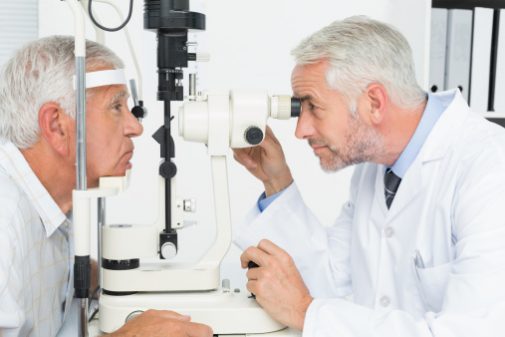Advocate Trinity Hospital issued the following announcement on May 3.
If you’re among the adults who are planning to remain vibrant and active as you age, you need to know about cataracts, a common vision problem.
More than half of all Americans will have a cataract or cataract surgery by age 80, according to the National Eye Institute. Some people start to develop cataracts in their 40s, but the cataracts usually don’t affect vision until people are older.
What are cataracts?
A cataract is a clouding of the natural lens inside the eye. The lens is a clear structure in the front of the eye that sits behind the iris, the colored part of the eye. The lens helps focus the light coming into the eye on the retina at the back of the eye. The retina’s nerves sense the light and send signals to your brain. The brain translates the signals into everything you see. The clouding of a cataract will make your vision blurry like a movie when the projector isn’t focused correctly.
You can have a cataract in one or both eyes, but the condition won’t spread from eye to eye.
What causes one?
Your eye lens is mainly water and protein. When the protein is in optimal condition, it is clear and transmits light into the eye without interruption.
As we age, the proteins in the lens start to clump together and the lens becomes cloudy. This cloudiness is the cataract. It grows over time and makes it harder to see.
Most people experience a discoloration of the lens. This can increase over time and make it harder to do things like read in dim light, distinguish colors or comfortably drive at night.
Along with age-related development, cataracts can develop:
After eye surgeries for glaucoma or retinal detachment
After an eye injury
As a result of some types of radiation, such as X-rays
Smoking
Having a poor diet
Babies can be born with cataracts or develop them as children. If the cataracts are small, they may not affect vision.
What are the signs?
If you develop cataracts, you may notice:
Cloudy or blurry vision
Colors start to appear faded
Glare. Headlights, lamps or sunlight may appear too bright. A halo may appear around lights.
Poor night vision
Frequent prescription changes in your eyeglasses or contact lenses
Can you reduce your risk?
We can’t avoid the natural aging process of the eyes, which can lead to cataracts. Research has found that diseases such diabetes have been linked to a higher risk for cataracts.
You may be able to reduce your cataract risks by:
Not smoking
Reducing alcohol consumption
Protecting the eyes from UV light by wearing sunglasses and/or a wide-brim hat
Eating a balanced, healthy diet rich in green leafy vegetables
Limiting steroid use, if possible
What’s the treatment?
Since cataracts develop slowly, initially, a change in glasses prescription or brighter lighting may help. When the cataract affects vision, surgery may become the best option. Visit with your eye care professional about your options.
If cataract surgery is a recommended option, during the surgery, the cloudy lens will be removed and replaced with an artificial lens implant called an intraocular lens (IOL). Most patients only need glasses to read after the surgery.
If you have questions about your eyes or your vision, visit your eye care professional.
Regular annual vision exams for everyone in the family should be part of your routine health care planning. Many eye diseases can be successfully treated when diagnosed early.
Dr. Cara A. Ystad provides eye care at the Aurora Health Clinic in Kenosha, Wis.
Original source can be found here.

Source: Advocate Trinity Hospital






 Alerts Sign-up
Alerts Sign-up